The Lawrence Jade Collection - 14 Nov 2023
A PAIR OF CHINESE WHITE JADEITE 'BAJIXIANG' BOWLS AND COVERS
A PAIR OF CHINESE WHITE JADEITE 'BAJIXIANG' BOWLS AND COVERS
19TH CENTURY
The U-shaped vessels gently flaring at the rims, each decorated in low relief with the Eight Daoist Emblems to the bowl and cover, the precious objects tied with ribbons, with finely incised bands of key fret bordering the edges, each raised on a short circular foot, the thinly-worked jade of a translucent icy-white tone, with a few minor apple-green and russet flecks in the stone, 11.2cm dia. (4)
Provenance: formerly the collection of Hugh S Whitaker; and then the Lawrence Collection of jades and hardstone carvings, purchased from Spink & Son prior to 1959.
Exhibited: Burlington Fine Arts Club, 1915, case no.2, illustrated pl.30.
Published: E Gorer & J F Blacker, Chinese Porcelain and Hardstones, London, 1911, vol.2, pl.244; also Burlington Fine Arts Club, 1915, case no.2, illustrated pl.30.
Whitaker was a collector of Oriental art in the early 20th century, and many items from his collection are now in major western museums, including the British Museum and the Victoria & Albert Museum. Whitaker is recorded in the Sparks' ledger books between 1914 and 1938 as a buyer.
The Bajixiang, or Eight Daoist Emblems, are the attributes of the Eight Daoist Immortals. They consist of the sword of Lu Dongbin, the fan of Zhong Liquan, the flower basket of Lan Caihe, the lotus of He Xiangu, the flute of Han Xiangzi, the gourd of Li Tieguai, the castanets of Cao Guojiu, and the drum of Zhang Guolao. They represent difficult conditions in life: poverty, wealth, aristocracy, plebeianism, age, youth, masculinity and femininity. The eight Daoist emblems should not be confused with the eight Buddhist emblems. Although the Qing emperors were not enthusiastic Daoists, the practise of Daoism was popular in society. The Yongzheng Emperor to a degree encouraged the belief in immortality and the practice of some Daoist rituals.
Cf. Pearl of the Orient: Treasures of the Hong Kong Museum of Art, p.104, no.131 for a pair of similar bowls decorated with dragons and phoenix; see also Catalogue of a Special Exhibition of Hindustan Jade in the National Palace Museum, pp.276-277, pl.75 for another comparable pair; see also J R Finlay, The Chinese Collection: Selected Works from the Norton Museum of Art, pp.244-245, no.108 for another related bowl.
十九世紀 翡翠雕八吉祥紋蓋碗 一對
來源:Hugh S Whitaker舊藏,勞倫斯珍藏玉石,1959年前購於Spink & Son。
展出:伯靈頓藝術俱樂部,1915年,展櫃編號2,圖30。

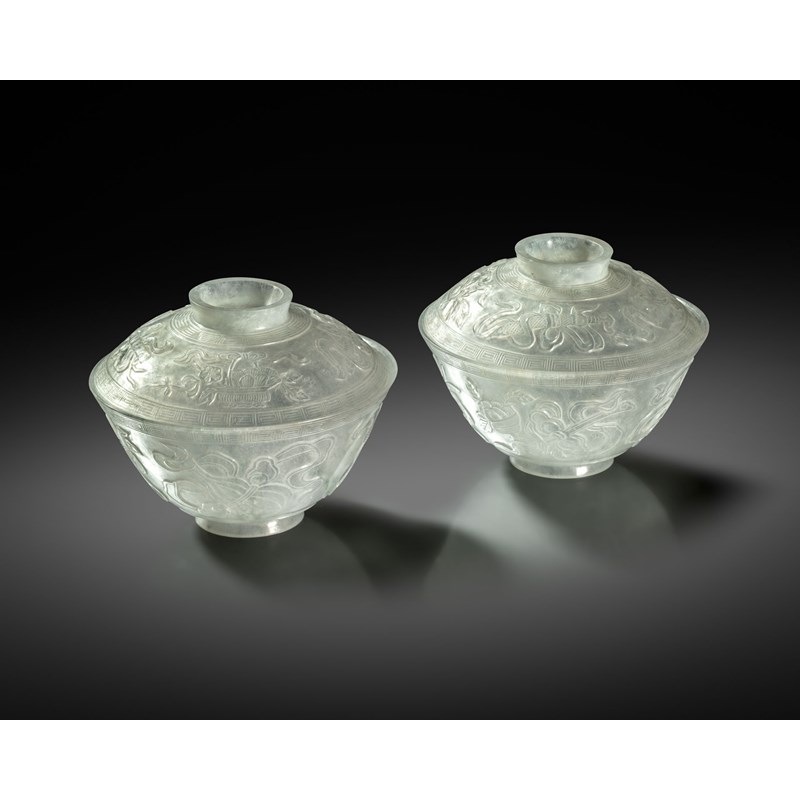
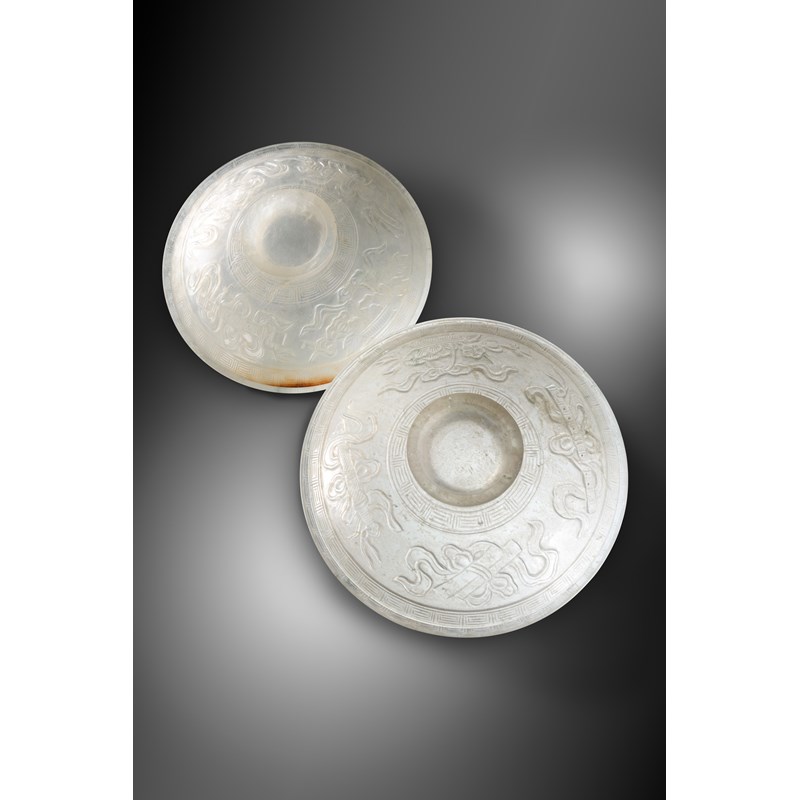
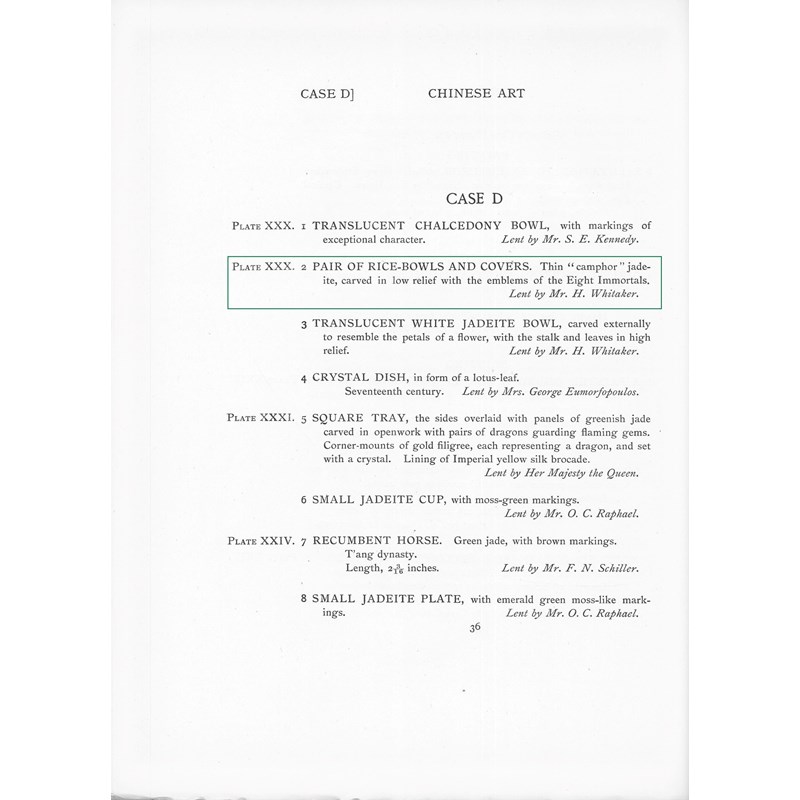
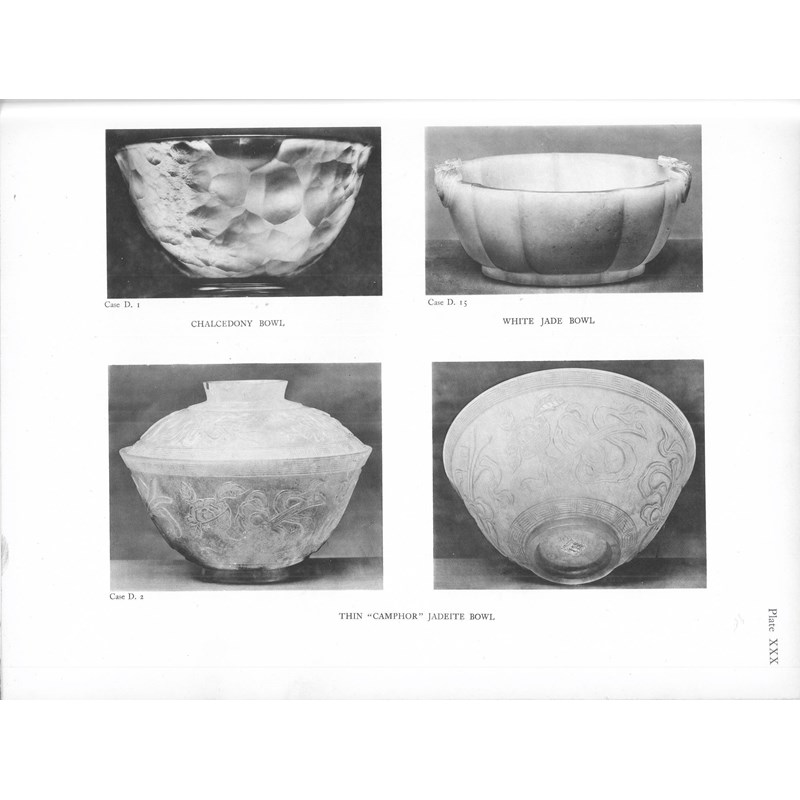
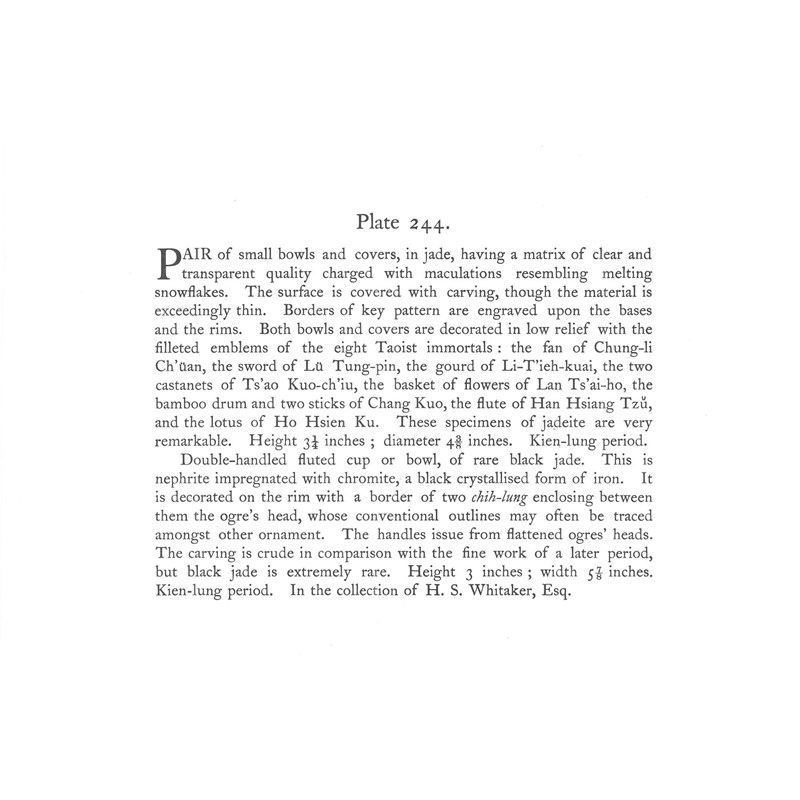



 Live online bidding is available via our own
Live online bidding is available via our own